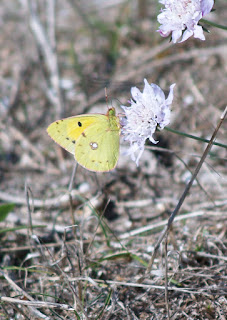Some of the critters from the Quiberon coast included Two-toothed door snails (Clausilia bidentata) and Garden snails (Helix aspersa). Insects recorded were grasshoppers (probably Sphingonotus caerulans); a day-flying moth and butterflies including a species of blue; Grizzled skippers (Pyrgus malvae); Clouded yellows (Colias croceus); Painted ladies (Cynthia cardui) and many Small whites (Artogeia rapae). There were also bumble bees (probably Bombus gerstaeckeri).
This blog may help people explore some of the 'hidden' issues involved in certain media treatments of environmental and scientific issues. Using personal digital images, it's also intended to emphasise seasonal (and other) changes in natural history of the Swansea (South Wales) area. The material should help participants in field-based modules and people generally interested in the natural world. The views are wholly those of the author.
Tuesday, 8 September 2015
Literally Littoral 2. Invertebrates
Some of the critters from the Quiberon coast included Two-toothed door snails (Clausilia bidentata) and Garden snails (Helix aspersa). Insects recorded were grasshoppers (probably Sphingonotus caerulans); a day-flying moth and butterflies including a species of blue; Grizzled skippers (Pyrgus malvae); Clouded yellows (Colias croceus); Painted ladies (Cynthia cardui) and many Small whites (Artogeia rapae). There were also bumble bees (probably Bombus gerstaeckeri).
Subscribe to:
Post Comments (Atom)
-
I n the UK and US, a pparently popular and successful vegan/vegetarian restaurants are reportedly closing or adding meat to their menus ( ...
-
Early ripening fruit may seem convenient but some folk think it confirms environmental stress. There's also a possibility th...











%20mating%20NWCW.jpg)


No comments:
Post a Comment